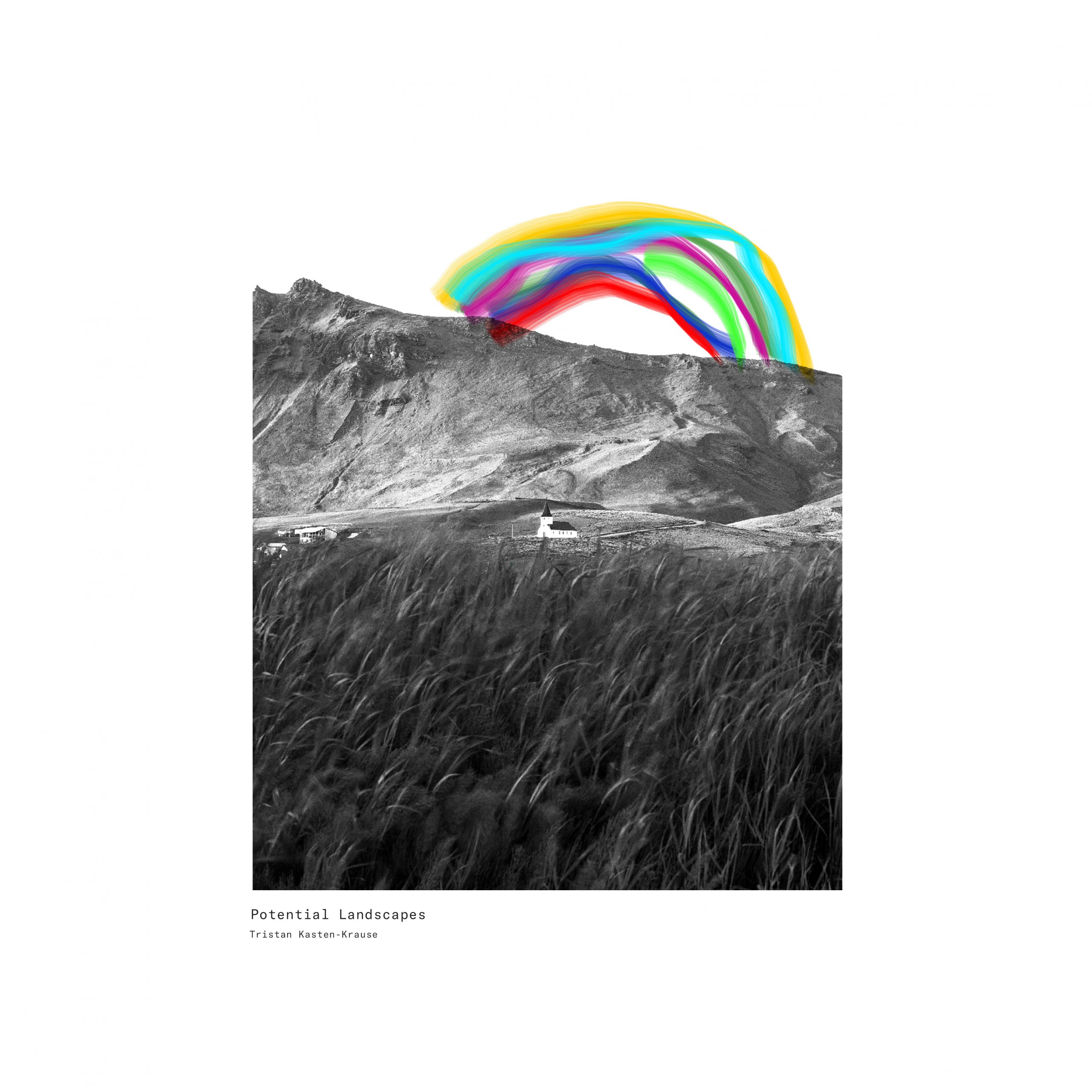The Breakdown
NEW YORK-based bassist and composer Tristan Kasten-Krause likes to mix it up, see a little of the creative world.
As well as being active on the Big Apple’s DIY and experimental scenes, he’s also played in Oklahoma!, in a production running on Broadway, which gives you any idea of his breadth and scope culturally.
He is, as the former will show, a musician who delights in collaboration; and with his debut album, Potential Landscapes, he’s enlisted the help of collaborators from across the experimental spectrum, not to fit in and do his bidding, but to bring their feel and to send Tristan’s delicious dronescapery skyward. He’d backed away from that particular form of power-unbalanced musical transaction, and genuinely wishes that those who he works with really bring their thing to the table.
Tristan also meshed with Tigue’s Matt Evans, Marateck, Cloud Nothing’s Jayson Gerycz, and Lisel; violinist and cheesemonger Carol Johnson, among other underground scions. They improvised and recorded their pieces in isolation, and sent them to them to Tristan, who manipulated, played over and arranged them. The cover art and supporting photography was undertaken by his brother, Jordan.
Potential Landscapes, the album, was recorded between 2018 and 2020, non-sequentially, structured around meetings with collaborators scattered across the country.
Tristan drew on the lineage of Éliane Radigue and her drone colours, intuitive rather than logical; the minimalism of Phil Niblock; Alvin Lucier’s exploration of resonance. He formed each piece on the album by uniting the fragments of music his collaborators sent him, shifting pitches and removing breath and bow strokes.
Potential Landscapes follows an emotional arc: it begins with the dawn of a new day, moves through the intense feelings of ecstasy and sorrow of the middle brace of tracks and finishes with awe and power.

“Dawn Looming” is the curtain-raiser and was also the lead single drop, so we’ve taken the mightily lovely step of embedding it for you below there. Be ready for full immersion, maybe an expletive or two as it washes over you. It’s an absolute delight of longform sustain, deep bass surge, music for a new day. Microtones bend as the melody stretches and climbs; circuitry fizzes and crackles at the precipice of distortion and dissonance, never quite falling over. As with all such dronesome things, my philosopher’s stone is Stars if the Lid, against which base metal this measures very favourably indeed; it has just a little more edge, a little more analogue primitivism, entirely intentional and luscious.
Tristan says: “’Dawn Looming’ opens the album with a gentle repetition that floats with the delicate radiance of sunrise.” For this track, he worked with guitarist Brendon Randall-Myers, conductor of the Glenn Branca Ensemble, and percussionist Matt Evans.
“Dawn Looming” comes with a visual dimension, created and directed by Derrick Belcham, who says: “Tristan approached me about creating a visual accompaniment to his beautiful composition. We decided on images that captured aspects of the ‘looming’, or abnormal refraction at a horizon line.
“The film was created using an analog technique of prepared textural objects manipulated in physical space and captured through a series of reflecting, refracting and diffracting substances by a digital cinema camera. No digital manipulation was applied in post-production beyond the sequencing of the individual scenes. It was a true pleasure to dive into the murky depths again for this deep and engaging track.”
“Euphoria Cancel” follows on in short order, and is painted from the same palette, although it has a trace of maritime folksiness to me, an almost squeezebox feel to the mournful, lapping tones; occasional percussive bells deep inside the mix are redolent of that pinging filigree you hear around a harbour in high winds. As the track shifts on, a more tribal and insistent pattering of rhythm becomes apparent, operating at the same tempo as the ringing bell resonance; other more abstruse instrumentation clamours with a throatiness. It bends from synthscape to a much more organic bliss, moves towards 12k’s Seaworthy, embraces the salty air. It would be good music to sprawl in some estuary-side meadow, watch the shipping glide in and out. It concludes with a surface drone placidity and a real undertow of movement, and ends on a single bell.
“From Thin Air” has a lachrymose vocal front and centre, by turns Sigur Rós, Arvo Pärt; sad, but delicately so, high, grand passion of a modern classical nature, notes falling and faltering, returning. It’s grandly human, is this track. For my money, there’s still very much a euphoria in the power and capabilities of the human voice to evoke, our first instrument of expression.
The album concludes in its longest track, at a quarter-hour, “Contra”; a more clustered, cacophonous being, drones wavering and weaving and bustling together with density and heaviness that begins to steady only seven minutes or so in; it’s like amassed horns, that threaded dissonance and minute changes in air flow and current modify the wavelength. If you’re at all dronally orientated, and I’m guessing that since you’ve got this far you really are, you’ll find this exhilarating and rapturous if not without a rising edginess. Not music for a claustrophobic context, necessarily; say, a metro tunnel. Although it would quite a sensory trip. I’d say you need oxygen, and plenty of it, for this.
Tristan’s solo debut is a quartet of pieces that all head out from the same wellspring in different directions, different emotions; yet with a unity of feeling. If you worship at the altar of a well-executed drone-based record, then this one is mightily pleasing, if it doesn’t break new ground, it takes you for a different look around places you thought you knew and introduces them afresh. Classy.
Tristan Kasten-Krause’s Potential Landscapes will be released digitally and on CD and vinyl by Whatever’s Clever Records on April 23rd; each LP comes with a handpainted rainbow. You can pre-order your copy now at Tristan’s Bandcamp.















No Comment